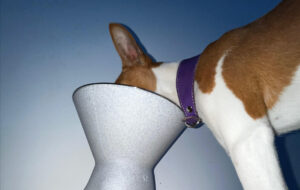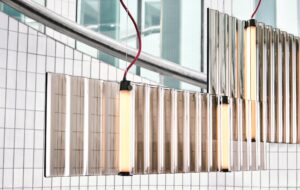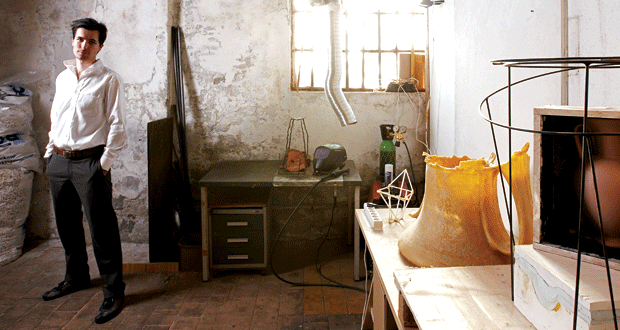
words Laura Houseley
Tomás Gabzdil Libertiny has always been fascinated with making things, and the methods behind their making. Disassembling objects and piecing them back together was a common pastime during his childhood in Slovakia. And this preoccupation with process has come to define the Rotterdam-based designer’s fledgling, but already highly acclaimed, career.
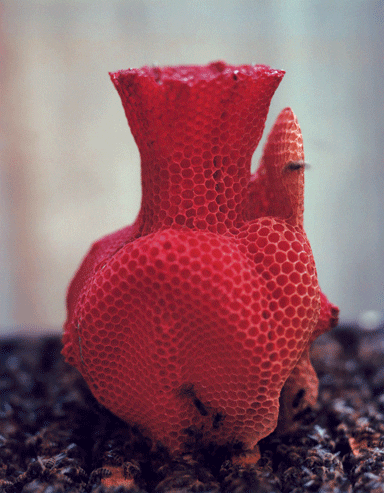
Honeycomb vase, 2006
The presentation of his Honeycomb Vase during Droog’s Smart Deco 2 exhibition at Milan’s Salone del Mobile in 2007 received a rapturous response, all the more dramatic when compared to the small, deformed and fragile object being celebrated. For its construction, Libertiny intervened in one of nature’s most fascinating building processes. He simply placed a vase-shaped mould in a beehive and then let nature take its course. Using the mould as scaffolding, the bees crafted an original design object in a process Libertiny then called “slow prototyping”.
An industrial design course in Bratislava followed by an art scholarship in Washington convinced Libertiny that he had ability in both fields. However, he didn’t feel he had much more to add to centuries of painterly expression. Libertiny already knew that his particular take on design would lean heavily towards the conceptual. Lucky, then, that he secured a place at the experimental Design Academy Eindhoven.
Libertiny feels the need for an intellectual basis to his designs. He talks of the long research process he undertakes for his pieces and the complex theories he demands of himself to justify their making. Critical writings on consumer society, Freud, even Gilles Lipovetsky’s Empire of Fashion were influential to Beeswax Amphora, a precursor of the Honeycomb Vase. In the accompanying essay Dialectics of Desire, he equates preciousness with rarity and fragility to conclude that beeswax is a more precious and therefore desirable material than others. Borrowing the form of an ancient Greek vase provided an appropriate link to flowers (the origin of the beeswax). The visual reference was necessary, Libertiny says, in order to help his audience “get the design immediately. I want to communicate quickly. If they don’t understand then something isn’t working”.
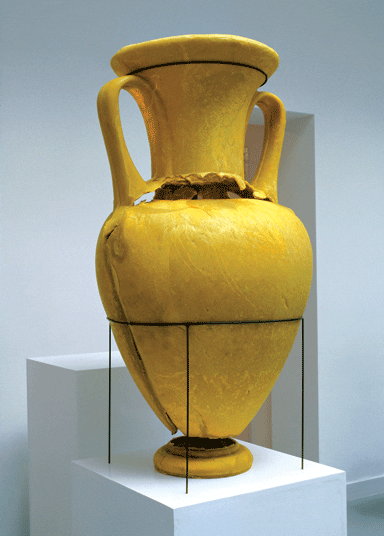
Beeswax Amphora, 2006
Criticism that the Beeswax Amphora could be perceived as a product of ego because of its scale and preciousness triggered the process that led to the Honeycomb Vase. Libertiny entered another period of intense research, after which he handed the construction of the object back to the bees. “Sometimes the things I found about the bees would be so amazing I’d get a shiver,” he says. The Honeycomb Vase was a pure and perfect conclusion to Libertiny’s thinking about the role of nature in design. And although he has filmed the process, he refuses to show it: “In seeing it, some of the magic is lost, it says too much and the theatre is gone.”
Libertiny’s next work took nature versus culture as its theme. Wood, Libertiny reckons, most often represents nature in contemporary design, while wood’s everyday cultural extension is paper. Shaping a book with a lathe was a eureka moment in the research for a new design material, one that could be sculpted just like wood. The resulting Paper Vases are cut from blocks of glued paper while the Writing Table series uses the same effect of layered paper as a surface, with a tactility that Libertiny describes as “erotic”.
The invention of new materials is a constant in Libertiny’s work. It is, in part, to allow him the maximum amount of control and authority – after all, he is the only master of these techniques. “I like the idea of being a Renaissance man,” says Libertiny, “that it can all be about attitude, having curiosity, ambition, doing everything – like Da Vinci.”
He recognises that the working method that has earned him so much praise is subject to change. But for now, Libertiny is happy to overlook proven methods of making and continue to search for original materials.
A welding gun ignited Libertiny’s imagination, and a stool built from solder is due to be exhibited at the Salone this year. The elongated form of the Welding Stool enhances the effect of its construction process. Layer upon layer of fluid material slowly build the body of the piece, mimicking natural growth processes.
Welding Tool is as deliberately anti-commercial and unique a product as his earlier designs. “If you make a spoon, the object must function as a spoon. What I am currently doing is different. It’s an idea that is presented like an object.” Doesn’t he think it important to make produceable, useable designs? “I’m not naive,” says Libertiny. “I’m at the beginning of my career with time to put into pieces that are conceptual and, also – very importantly – with time to develop my style. But I don’t believe I will always work like this. I’d love to do something for Cappellini!’
portrait Rene Van Der Hulst
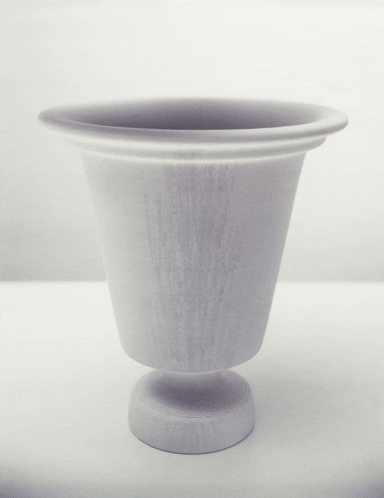
Paper Vase, 2007
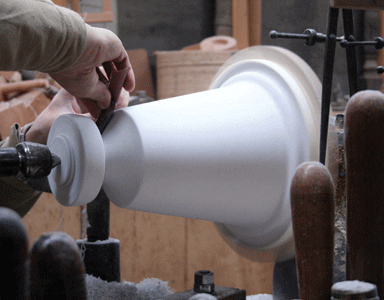
Paper Vase, 2007
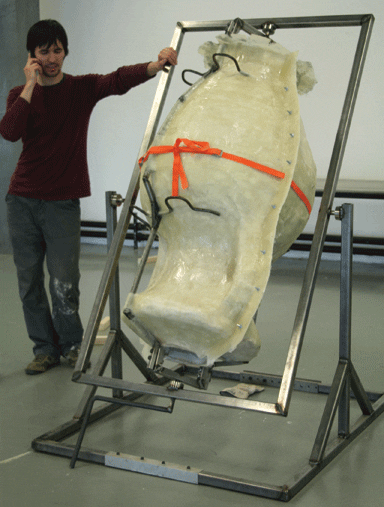
The custom-made rotating tool used to create Amphora
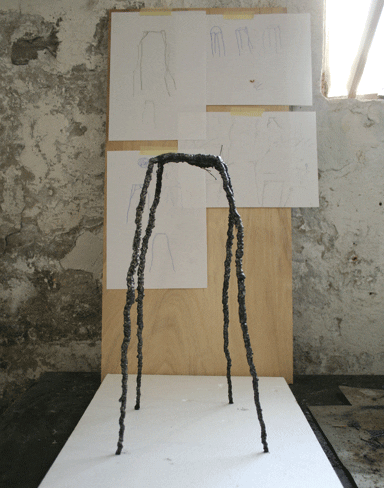
Early prototype of Welding Stool, 2007


